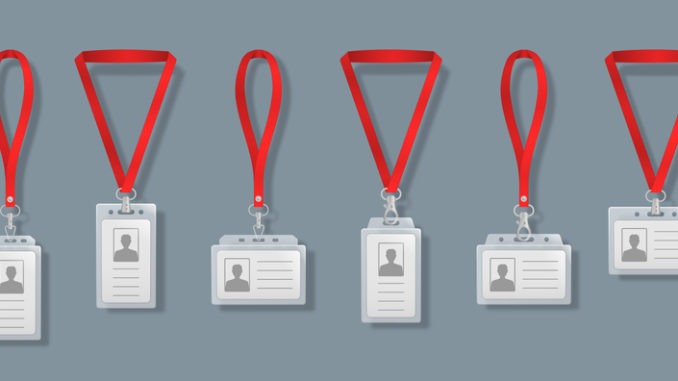
Turnover is as big a problem as ever. A panel of experts gives advice on how you can make sure your staff don’t leave
This is an edited version of an article that originally appeared on Management Today
1. Assess the needs of your staff
“People are resigning because their underlying needs and motivations are not being understood and, therefore, met. It should be basic business practice to assess your workforce for what motivates them. In order to do this properly you need to create an objective assessment framework, not collect anecdotes. Right now you should be paying special attention to how motivation and collaboration are affected by a distributed workforce – I’d suggest finding out quickly because, if they’re not leaving now, they will be at some point in the future.”
– Mick Lock, head of product, the Chemistry Group
2. Schemes and incentives
“A properly structured share plan should have both no immediate cash flow implications and act as an effective pair of ‘golden handcuffs’ – the employee has to stay the course to benefit from the plan. If you’re able to grant qualifying Enterprise Management Incentive options, or use one of the other statutory tax-advantaged share schemes, you can provide employees with valuable rewards cost-effectively. Factoring in income tax, national insurance and corporation tax reliefs, it can cost an employer as little as 90p to put £1.00 into an employee’s pocket. A cash bonus, by comparison, costs an employer up to £1.77 to give an employee £1.00 of net benefit.”
– Thomas Dalby, head of employer solutions, Haines Watts
3. Adapt and adopt
“Companies that expect, and demand, a return to pre-pandemic ‘business as usual’ are at risk. The answer to riding this new wave of resignations – the ability to retain and acquire talent – lies in providing an exceptional employee experience.
“As business leaders we need to ‘earn’ our employees back. Free food isn’t going to cut it anymore. Leaders need to be intentional about creating collaborative spaces, adopting the right technology and supporting the evolution of a culture which will help support a hybrid work future. Whether employees decide to work from home, from the office, or both, it’s important to offer an experience which suits everyone – and don’t be afraid to adjust this as time goes on.”
– Larry Gadea, CEO and founder, Envoy
4. Communication is key
“A lack of communication and poor, unclear, career progression are the main drivers of the ‘Great Resignation’, as employees feel overlooked with little opportunity to grow professionally. Without continuous feedback, or a clear career path forward, employees look to go elsewhere.
“With the future looking hybrid, digital communication platforms ensure that all employees have an opportunity to feel heard. Newsfeeds, team chats, feedback loops, social channels, video meetings and pulse surveys are just some of the ways leaders can leverage technology to create an inclusive and transparent company culture, regardless of location.”
– Mark Seemann, CEO and founder, StaffCircle
5. Not only the ‘What’ but also the ‘Why’
“The pandemic has done employees a favour in the long run, as it has exposed those businesses which have covered their brand in a fancy purpose wrapper, but have not taken the time to really consider how to organise around a core purpose and deliver more than paper-thin promises to society. It has helped people to identify those businesses that are truly committed to improving society and the world around them, and identify roles in which they will be able to make the most impact.
“Businesses that are organised around their core purpose will have no trouble attracting and retaining talent – particularly younger workers – because this generation is not motivated by money or pretence, as survey after survey shows; they want to be heavily invested in ‘the cause’. They want their work to be meaningful. They will seek out roles where they are rewarded and recognised for their contributions, and will be driven by the impact they are making, both individually, and collectively.”
– Neil Gaught, strategy advisor and founder, Single Organizing Idea
6. Be flexible with new norms and practices
“Employee retention has been an ever-present challenge for leaders but, as we enter a post-pandemic era, how long people stay with their organisations will come down to the individual’s meaningful experiences, and their connections to people across the organisation. A key component of this is the emergence and popularisation of the hybrid workplace, which provides much of the balance and flexibility employees enjoyed for over a year, as well as the social interaction they missed.
“It’s a viable alternative that still meets the requirements of safety, efficiency, versatility and connection; our research shows that, when employees have schedule and location flexibility at work, workforce retention increases to 77%.
It’s time to rethink the future of the employee experience and how to build an organisational culture to support it. For this new hybrid model to be successful, organisations must create space – both physical and virtual – to connect people to purpose, accomplishment and one another.”
More traditional ideas around employee satisfaction and support (or lack of) are a thing of the past. As we move into this ‘post-pandemic era’, companies must build a greater and more genuine connection to their staff if they are to keep them on the payroll. It’s vital that business leaders listen to the needs of their employees and ensure that the success we’ve managed to have during difficult times remains going forward.




Be the first to comment